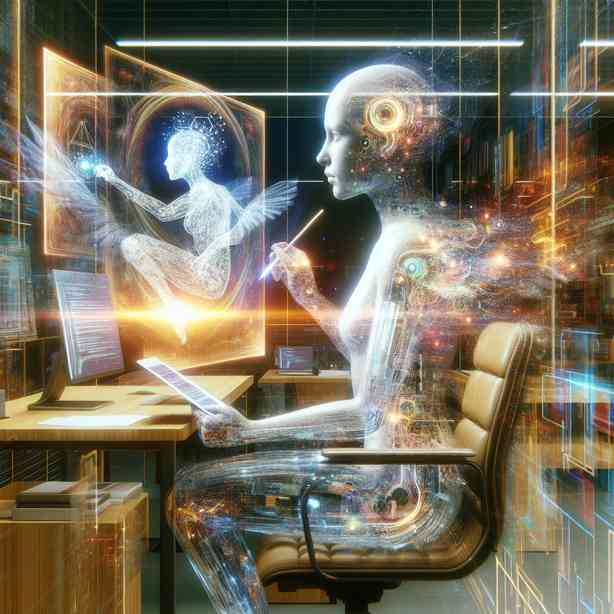
When Using AI to Debug Your Own AI
In the rapidly evolving landscape of artificial intelligence, the complexities of building and maintaining AI systems can sometimes lead to unexpected behaviors or bugs. Debugging these systems is crucial to ensure they function correctly and deliver reliable outputs. With the advent of AI technologies themselves, developers are increasingly turning to AI-powered tools to help debug their own AI models. This approach not only expedites the debugging process but also brings a higher level of accuracy in identifying and resolving issues.
The process of debugging an AI system typically involves understanding the model’s architecture, its training process, and the data it uses. Often, traditional debugging methods—such as manual inspection and line-by-line code review—may fall short in addressing the unique challenges posed by machine learning models. These models, especially deep learning architectures, can behave in unpredictable ways, making pinpointing the exact source of an error a daunting task.
One effective way to leverage AI in debugging is through the use of automated testing tools. These tools can analyze the model’s performance across various datasets, simulating a wide range of scenarios and edge cases that a developer might not think to test. By identifying anomalies in the model’s predictions, AI-powered testing tools can highlight areas where the model may not be performing as intended.
Furthermore, employing generative models can assist in creating synthetic datasets that mimic real-world scenarios. This allows developers to stress-test their AI systems under varied conditions, enhancing their robustness. By utilizing AI to generate these test cases, developers can uncover issues that may only arise under specific circumstances, which may be challenging to identify with conventional datasets.
Another powerful application of AI in debugging is anomaly detection. By training an AI model specifically to recognize normal behavior patterns in the primary AI system, developers can set thresholds for expected performance. When the model’s output deviates from these established norms, the anomaly detection system can flag the behavior for further investigation. This proactive identification of potential issues helps catch bugs early in the development cycle, reducing the time and resources needed for rectification.
Moreover, explanation tools powered by AI can significantly enhance the debugging process by providing insights into why a model makes certain decisions. These tools analyze the internal workings of AI systems, offering clarity on the factors influencing the model’s outputs. For example, techniques like SHAP (SHapley Additive exPlanations) and LIME (Local Interpretable Model-agnostic Explanations) allow developers to understand feature importance and how input variables contribute to the output. Such transparency is vital, as it not only helps in debugging but also fosters trust in AI systems.
Despite the advantages offered by AI in debugging, it is essential to approach the integration of these technologies with caution. The reliance on AI tools should not overshadow the importance of a developer’s domain knowledge and intuition. While AI can assist in identifying patterns and suggesting fixes, understanding the underlying principles of the model and its intended application is crucial. Without this foundational knowledge, there is a risk of misinterpreting AI-generated recommendations or misapplying fixes that may lead to further complications.
Additionally, data hygiene plays a critical role in the effectiveness of AI-assisted debugging. The quality of the input data directly influences the performance and reliability of both the AI model and the debugging tools employed. Therefore, ensuring clean and representative datasets is paramount. This involves not only preprocessing raw data but also continuously monitoring data integrity as new inputs are introduced to the system.
As AI continues to reshape the way we approach problem-solving, the convergence of AI tools in debugging stands out as a pivotal development. This shift not only enhances efficiency but also democratizes debugging processes, enabling not just specialized data scientists but also domain experts to participate actively in AI model improvement. The collaborative approach of combining human insight with AI capabilities fosters a more holistic view of system performance.
Moreover, the integration of continuous learning mechanisms in AI models means that debugging is no longer a one-time effort. As models evolve and new data becomes available, ongoing evaluation and adjustment of the systems are necessary. AI tools can play a critical role in establishing feedback loops, where the output of the model can be compared against expected results, informing further enhancements and debugging efforts as needed.
The role of community and open-source contributions is also vital in this context. Many AI debugging tools and frameworks benefit from the collective knowledge and experiences of practitioners across the globe. By sharing insights, strategies, and resources, AI developers can learn from one another, discovering novel approaches to common debugging challenges. This collaborative spirit not only enriches the tools available for debugging but also helps establish best practices, further advancing the field of AI development.
In summary, employing AI to debug AI models represents a significant advancement in ensuring the reliability and effectiveness of these systems. The use of automated testing, anomaly detection, explanation tools, and continuous learning mechanisms are just a few methods by which developers can enhance their debugging processes. However, it is essential to maintain a balance between leveraging technology and applying human expertise. The interplay between AI tools and human insight creates a more robust framework for building reliable AI systems, ultimately leading to innovations that can transform various industries and improve everyday life.
As we move forward, the journey of debugging AI using AI is likely to evolve further, pushing boundaries and uncovering new possibilities. With ongoing research and development, we can anticipate even more sophisticated tools and methodologies that will shape how we approach the complexities of AI systems. By embracing these advancements, developers can not only contribute to more reliable AI solutions but also define the future landscape of technology.


